Resources
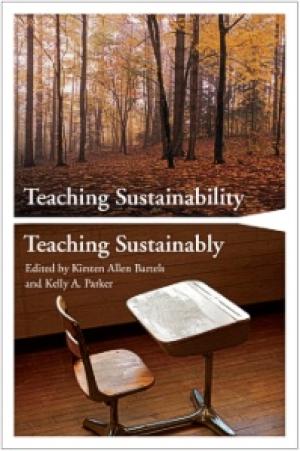
Over the coming decades, every academic discipline will have to respond to the paradigm of more sustainable life practices because students will be living in a world challenged by competition for resources and climate change, and will demand that every academic discipline demonstrate substantial and corresponding relevance. This book takes as its point of departure that integrating a component of sustainability into a discipline-specific course arises from an educator asking a simple question: in the coming decades, as humanity faces unprecedented challenges, what can my discipline or area of research contribute toward a better understanding of these issues? The discipline need not be future-oriented: an archaeologist, for instance, could incorporate into a course some aspects of sustainable archaeological practices in areas threatened by rapid climate change, as well as examples of sustainable or unsustainable ways of living practiced by members of the long-gone society under investigation. This book also argues that courses about sustainability need to cross disciplinary boundaries, both because of the inter-relatedness of the issues, and because students will require the ability to use interdisciplinary approaches to thrive through the multiple careers most of them will face. The contributions to this book are presented under four sections. “Sustainability as a Core Value in Education” considers the rationale for incorporating sustainability in disciplinary courses. “Teaching Sustainability in the Academic Disciplines” presents eight examples of courses from disciplines as varied as agriculture, composition, engineering, and teacher education. “Education as a Sustainable Practice” reviews how the physical environment of the classroom and the delivery of instruction need themselves to reflect the values being taught. The final section addresses the issues of leadership and long-term institutional change needed to embed sustainable practice as a core value on campus. (From the Publisher)

Susan Peck MacDonald here tackles important and often controversial contemporary questions regarding the rhetoric of inquiry, the social construction of knowledge, and the professionalization of the academy. MacDonald argues that the academy has devoted more effort to analyzing theory and method than to analyzing its own texts. Professional texts need further attention because they not only create but are also shaped by the knowledge that is special to each discipline. Her assumption is that knowledge making is the distinctive activity of the academy at the professional level; for that reason, it is important to examine differences in the ways the professional texts of subdisciplinary communities focus on and consolidate knowledge within their fields. MacDonald’s examination concentrates on three sample subdisciplinary fields: attachment research in psychology, Colonial New England social history, and Renaissance New Historicism in literary studies. By tracing, over a period of two decades, how members of each field have discussed a problem in their professional discourse, MacDonald explores whether they have progressed toward a greater resolution of their problems. In her examination of attachment research, she traces the field’s progress from its theoretical origins through its discovery of a method to a point of greater conceptual elaboration and agreement. Similarly, in Colonial New England social history, MacDonald examines debates over the values of narrative and analysis and, in Renaissance New Historicism, discusses particularist tendencies and ways in which New Historicist articles are organized by anecdotes and narratives. MacDonald goes on to discuss sentence-level patterns, boldly proposing a method for examining how disciplinary differences in knowledge making are created and reflected at the sentence level. Throughout her work, MacDonald stresses her conviction that academics need to do a better job of explaining their text-making axioms, clarifying their expectations of students at all levels, and monitoring their own professional practices. MacDonald’s proposals for both textual and sentence-level analysis will help academic professionals better understand how they might improve communication within their professional communities and with their students. (From the Publisher)
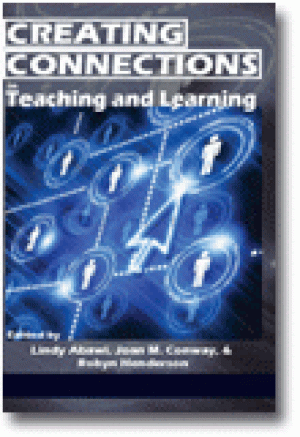
This book explores the wide range of contexts in which research into creating connections in learning and teaching may take place. Creating connections can encompass making links, crossing divides, forming relationships, building frameworks, and generating new knowledge. The cognitive, cultural, social, emotional and/or physical aspects of understanding, meaning-making, motivating, acting, researching, and evaluating are explored as constituent forms of creativity in relation to such connections. From this exploration the authors identify varied connective contexts and means which include the learner, the educator, the organisation, and the relevant community. The crossing of divides, forming learner-educator relationships, bringing together diverse groups of learners, establishing networks and partnerships among educators, and establishing links between organisations and communities are all considered as connections which can be created by and within the learning and teaching dynamic. By examining the factors which help to facilitate and/or restrict the possibilities for creating connections in educational contexts, implications for and outcomes of learning and/or teaching arise from the connections created. The final chapter of this book will explicate the realisations that have emerged for educators and researchers working to create connections. These offer suggestions for future directions and enunciate what and how connections might contribute to both educational institutions and the broader society. (From the Publisher)
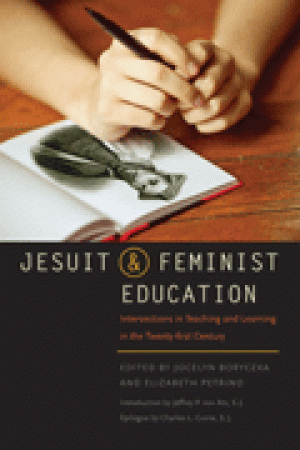
This book explores how the principles and practices of Ignatian pedagogy overlap and intersect with contemporary feminist theory in order to gain deeper insight into the complexities of today's multicultural educational contexts. Drawing on a method of inquiry that locates individual and collective standpoints in relation to social, political, and economic structures, this volume highlights points of convergence and divergence between Ignatian and feminist pedagogies to explore how educators might find strikingly similar methods that advocate common goals—including engaging with issues such as race, gender, diversity, and social justice. The contributors to this volume initiate a dynamic dialogue that will enliven our campuses for years to come. (From the Publisher)
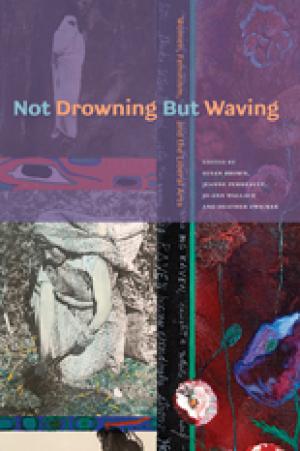
Twenty-two essays explore topics such as feminism in the liberal arts disciplines; the relationship of the liberal arts to the larger university; the costs and rewards for women in administration; the corporatization of university campuses; intergenerational and transcultural tensions within feminist communities; balancing personal life with professional aspirations; the relationship of feminism to cultural studies; women, social justice, and the liberal arts. Not Drowning But Waving is a welcome progress report on the variety of feminisms at work in academe and beyond. It provides crucial insights for university administrators, faculty, and literate non-specialists interested in the Arts and Humanities. (From the Publisher)
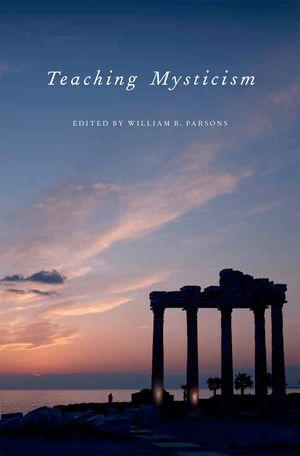
AAR Teaching Religious Studies Series (Oxford University Press)s The term ''mysticism'' has never been consistently defined or employed, either in religious traditions or in academic discourse. The essays in this volume offer ways of defining what mysticism is, as well as methods for grappling with its complexity in a classroom. This volume addresses the diverse literature surrounding mysticism in four interrelated parts. The first part includes essays on the tradition and context of mysticism, devoted to drawing out and examining the mystical element in many religious traditions. The second part engages traditions and religio-cultural strands in which ''mysticism'' is linked to other terms, such as shamanism, esotericism, and Gnosticism. The volume's third part focuses on methodological strategies for defining ''mysticism,'' with respect to varying social spaces. The final essays show how contemporary social issues and movements have impacted the meaning, study, and pedagogy of mysticism. Teaching Mysticism presents pedagogical reflections on how best to communicate mysticism from a variety of institutional spaces. It surveys the broad range of meanings of mysticism, its utilization in the traditions, the theories and methods that have been used to understand it, and provides critical insight into the resulting controversies. (From the Publisher)
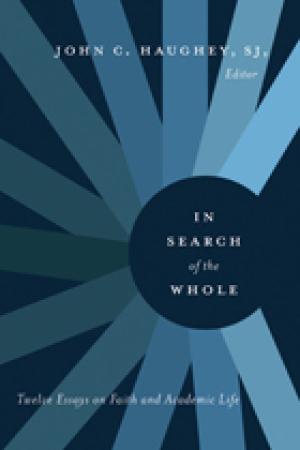
The contributors to this inspiring anthology meet the challenge that everyone faces: that of becoming a whole person in both their personal and professional lives. John C. Haughey, SJ, has gathered twelve professionals in higher education from a variety of disciplines—philosophy, theology, health care, business, and administration. What they have in common reflects the creative understanding of the meaning of "catholic" as Haughey has found it to operate in Catholic higher education. Each essay in the first six chapters describes how its author has assembled a unique whole from within his or her particular area of academic competence. The last six chapters are more autobiographical, with each author describing what has become central to his or her identity. All twelve are "anticipating an entirety" with each contributing a coherence that is as surprising as it is delightful. (From the Publisher)
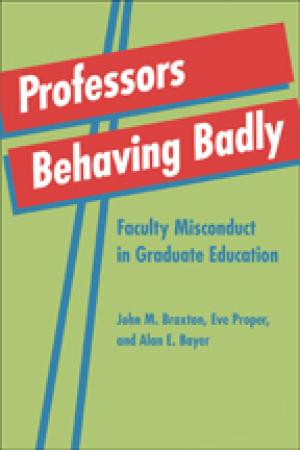
• A faculty member publishes an article without offering coauthorship to a graduate assistant who has made a substantial conceptual or methodological contribution to the article. • A professor does not permit graduate students to express viewpoints different from her own. • A graduate student close to finishing his dissertation cannot reach his traveling advisor, a circumstance that jeopardizes his degree. This book discusses these and other examples of faculty misconduct—and how to avoid them. Using data collected through faculty surveys, the authors describe behaviors associated with graduate teaching which are considered inappropriate and in violation of good teaching practices. They derive a normative structure that consists of five inviolable and eight admonitory proscriptive criteria to help graduate faculty make informed and acceptable professional choices. The authors discuss the various ways in which faculty members acquire the norms of teaching and mentoring, including the graduate school socialization process, role models, disciplinary codes of ethics, and scholarship about the professoriate and professional performance. Analyzing the rich data gleaned from the faculty surveys, they track how these norms are understood and interpreted across academic disciplines and are influenced by such factors as gender, citizenship, age, academic rank, tenure, research activity, and administrative experience. (From the Publisher)
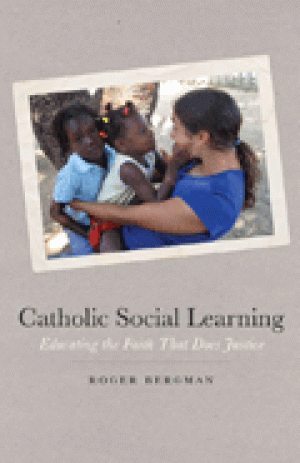
The canon for Catholic social teaching spreads to six hundred pages, yet fewer than two pages are devoted to Catholic social learning or pedagogy. In this long-needed book, Roger Bergman begins to correct that gross imbalance. He asks: How do we educate ("lead out") the faith that does justice? How is commitment to social justice provoked and sustained over a lifetime? To address these questions, Bergman weaves what he has learned from thirty years as a faith-that-does-justice educator with the best of current scholarship and historical authorities. He reflects on personal experience; the experience of Church leaders, lay activists, and university students; and the few words the tradition itself has to say about a pedagogy for justice. Catholic Social Learning explores the foundations of this pedagogy, demonstrates its practical applications, and illuminates why and how it is fundamental to Catholic higher education. Part I identifies personal encounters with the poor and marginalized as key to stimulating a hunger and thirst for justice. Part II presents three applications of Catholic social learning: cross-cultural immersion as illustrated by Creighton University's Semestre Dominicano program; community-based service learning; and the teaching of moral exemplars such as Dorothy Day, Rev. Martin Luther King Jr., and Archbishop Oscar Romero. Part III then elucidates how a pedagogy for justice applies to the traditional liberal educational mission of the Catholic university, and how it can be put into action. Catholic Social Learning is both a valuable, practical resource for Christian educators and an important step forward in the development of a transformative pedagogy. Roger Bergman is the founding director of the Justice and Peace Studies Program at Creighton University, where he is also Associate Professor in the Department of Sociology and Anthropology. (From the Publisher)
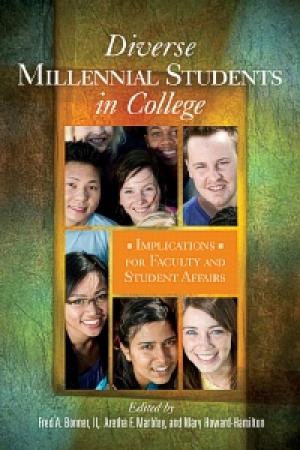
While many institutions have developed policies to address the myriad needs of Millennial college students and their parents, inherent in many of these initiatives is the underlying assumption that this student population is a homogeneous group. This book is significant because it addresses and explores the characteristics and experiences of Millennials from an array of perspectives, taking into account not only racial and ethnic identity but also cultural background, sexual orientation, and socioeconomic status differences—all factors contributing to how these students interface with academe. In providing a “voice” to “voiceless” populations of African American, Asian American, Bi/Multi-Racial, Latino, Native American, and LGBT millennial college students, this book engages with such questions as: Does the term “Millennial” apply to these under-represented students? What role does technology, pop culture, sexual orientation, and race politics play in the identity development for these populations? Do our current minority development theories apply to these groups? And, ultimately, are higher education institutions prepared to meet both the cultural and developmental needs of diverse minority groups of Millennial college students?” This book is addressed primarily to college and university administrators and faculty members who seek greater depth and understanding of the issues associated with diverse Millennial college student populations. This book informs readers about the ways in which this cohort differs from their majority counterparts to open a dialogue about how faculty members and administrators can meet their needs effectively both inside and outside the classroom. It will also be of value to student affairs personnel, students enrolled in graduate level courses in higher education and other social science courses that explore issues of college student development and diversity, particularly students planning to work with diverse Millennial college students in both clinical or practical work settings. (From the Publisher)